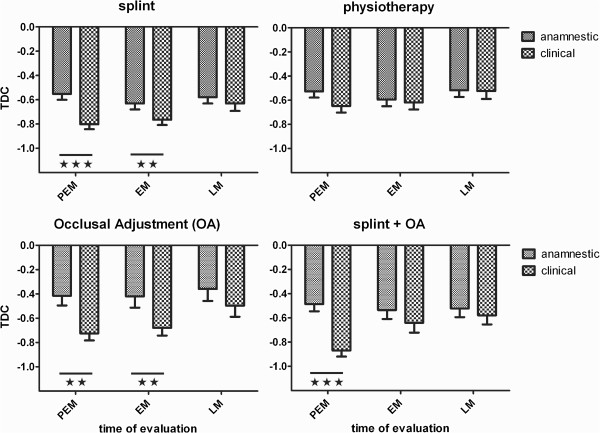Figure 2.
TDC-values (mean and SEM) based on anamnestic and clinical reference items respectively (four therapies). Three occasions of treatment (Tx) evaluation: (1) PEM, ‘pre-end-measurement’ of Tx-outcome, by the clinician at the last Tx-visit; (2) EM, ‘end-measurement’ of Tx-outcome in the short-term, by the assessor at the first post-Tx visit, and (3) LM, ‘last measurement’ with the ultimate Tx-outcome, by the assessor at the last post-Tx visit. TDC-values at PEM include the effect of possibly added reference items from the clinician and TDC-values at EM and LM from solely the assessor (cf. Table 4, mode s-A). Other modes of addition, including no-addition, yielded similar results (not shown here). The horizontal bars indicate cases of significant differences (Bonferroni’s multiple comparison tests) between TDC-anamnestic and TDC-clinical at various times of evaluation; **, p < 0.01; ***, p < 0.001. Significant differences between occasions of evaluation (not shown) occurred only for TDC-clinical, between PEM and LM for splint-Tx (p < 0.05) and for the combination of splint and occusal adjustment (splint + OA, p < 0.05).Note that the values of TDC-anamnestic were similar for the three occasions of evaluation. For the dental therapies, TDC-clinical increased (less negative TDC-values related to less improvement of the patients) at the post-Tx occasions so that TDC-clinical approached TDC-anamnestic at LM.

